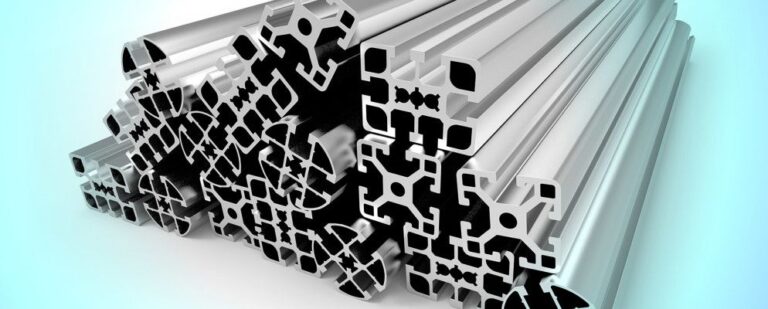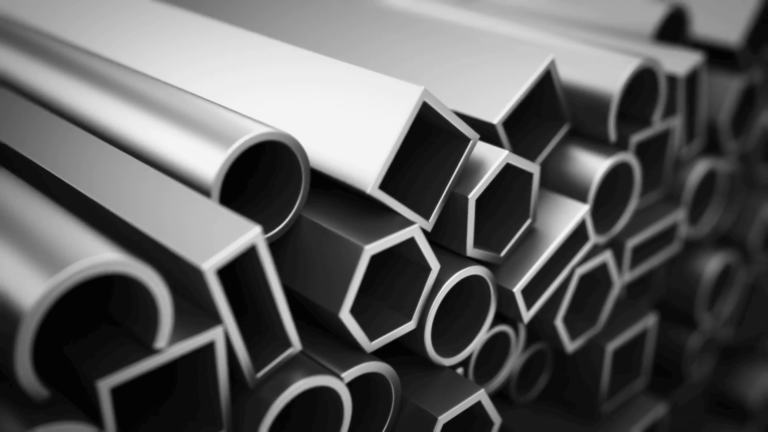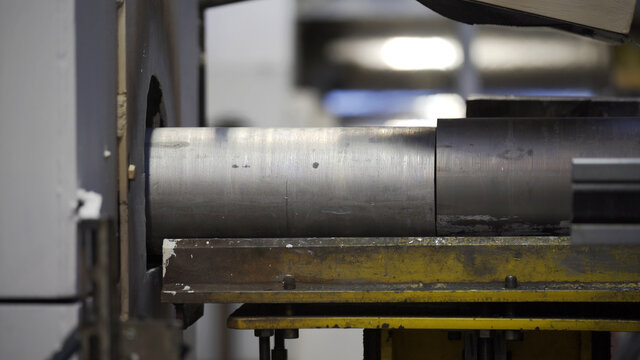Aluminium profiles, or aluminium extrusions, are long-shaped pieces made from aluminium alloy produced through extrusion. Extrusion involves forcing a heated aluminium billet or log through a specially designed die to create complex cross-sectional shapes. Aluminium profiles can be packed using various methods to ensure safe transportation and storage. Aluminium profiles are reactive to external factors resulting in oxidation of the structure. One of the ways to protect aluminium used by manufacturers is aluminium anodizing, which creates a protective layer on the profile surface.
Customized packaging can be tailored to the specific shape and size of the profiles, ensuring optimal protection. The choice of packing type depends on factors such as profile size, weight, fragility, and transportation requirements, with manufacturers and suppliers selecting the most suitable option to safeguard the aluminium profiles during handling and shipping.
Here, you can explore the various types of packing used for aluminium profiles and the process of aluminium anodizing.
Types of Packaging Used for Aluminium Profiles
When it comes to packing aluminium profiles, several types of packaging options are available depending on the size, shape, and quantity of the profiles.
- Bundles: Aluminium profiles are bundled together using strapping or metal bands, ensuring stability during transportation.
- Wooden Crates: Larger and heavier aluminium profiles are packed in wooden crates with protective padding or foam for added safety.
- Cardboard Boxes: Smaller aluminium profiles or components are packed in lightweight, cost-effective cardboard boxes, often with dividers or foam inserts.
- Plastic Wrapping: Individual aluminium profiles may be wrapped in plastic film or shrink-wrap to protect against scratches, dirt, and moisture.
- Customized Packaging: Tailored packaging solutions such as foam-lined containers, pallets, or protective covers are used for specific profile shapes and sizes, ensuring optimal protection during transit.
The packaging of the profile may vary depending on the dimension, weight, transportation method, and customer preferences. Manufacturers and suppliers usually determine the most suitable packaging option based on these considerations to ensure aluminium profiles’ safe and efficient delivery.
Process of Aluminium Anodizing
Aluminium profiles play a significant role in the process of aluminium anodizing. Anodizing is an electrochemical process that forms a protective layer of aluminium oxide on the surface of aluminium profiles. This oxide layer enhances the profiles’ corrosion resistance, durability, and aesthetic appearance.
Here are some key points regarding aluminium profiles in terms of aluminium anodizing:
- Base Material: Aluminium profiles used for anodizing should be made from alloys suitable for the process. The most commonly anodized aluminium alloy is 6063, known for its good extrudability and anodizing characteristics. Other alloys, such as 6061 and 6005, can also be anodized but may require additional considerations.
- Surface Preparation: Before anodizing, the aluminium profiles undergo a surface preparation step to remove contaminants, such as oil, grease, or dirt. This is typically done through a thorough cleaning process, which may involve alkaline or acidic cleaning solutions and mechanical methods to ensure a clean surface.
- Anodizing Process: Anodizing involves immersing the aluminium profiles in an electrolyte bath and passing an electric current through them. This causes a controlled oxidation of the aluminium surface, forming an oxide layer. The type of electrolyte, temperature, current density, and anodizing time can all be adjusted to achieve desired results in terms of oxide thickness, colour, and surface finish.
- Anodized Finish: Aluminium profiles can be anodized to achieve various finishes, including clear or natural anodized finish, which retains the silver metallic appearance of aluminium or coloured anodized finishes.
- Sealing: After the anodizing process, aluminium profiles are often sealed to improve the corrosion resistance and durability of the anodized coating. Sealing involves closing the pores of the anodic oxide layer using hot water, steam, or chemicals. This step helps in enhancing the longevity and performance of the anodized finish.
- Design Considerations: Designing aluminium profiles for anodizing involves profile geometry, surface finish requirements, and compatibility with the anodizing process. Certain design elements, such as sharp corners or recessed areas, may result in uneven anodized finishes and should be carefully addressed during the profile design phase.
This layer of aluminium oxide on the surface of aluminium profiles enhances corrosion resistance, improves durability, and provides an opportunity for decorative finishes. Anodized aluminium sections are available in various colours and textures, adding aesthetic appeal to architectural, automotive, and other applications. The packaging types for aluminium profiles and the choice of aluminium temper for anodizing depend on specific requirements, industry standards, and customer preferences. Manufacturers and suppliers in the aluminium extrusion industry typically provide suitable packaging options and guidance on the appropriate temper for anodizing based on their expertise and customer needs.
Conclusion
The choice of packaging types for aluminium profiles and the suitable temper for aluminium anodizing depend on specific requirements, industry standards, and customer preferences. Manufacturers and suppliers in the aluminium extrusion industry provide appropriate packaging options and guidance on the ideal anodising temperature based on their expertise and customer needs.Anodizing provides a durable and aesthetically pleasing surface finish for aluminium profiles, making them resistant to corrosion, wear, and weathering. The anodized profiles find applications in architectural facades, window frames, automotive trims, furniture, electronics, and other industries where enhanced appearance and protection are desired. Anodized aluminium sections result from the anodizing process, where a protective layer of aluminium oxide enhances corrosion resistance, improves durability, and offers opportunities for decorative finishes.







